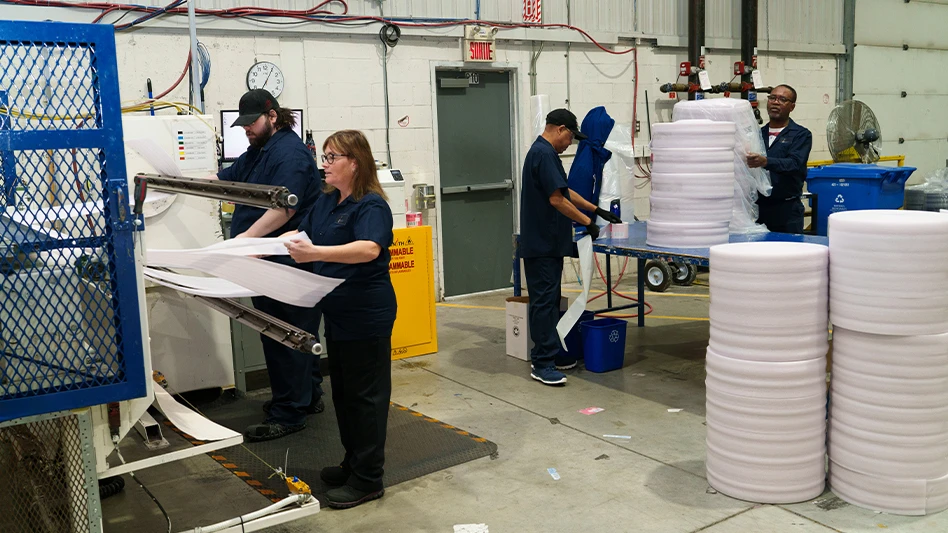The beginning of this year has been marked by several notable closures in the papermaking industry, with analysts predicting more to come as companies look to optimize and streamline their mill networks.
First, in January, Delaware, Ohio-based packaging company Greif Inc. announced it would cease production on its No. 1 paperboard machine at its uncoated recycled paperboard (URB) and specialty converting site in Austell, Georgia, and planned to permanently close its containerboard and URB mill in Fitchburg, Massachusetts.
The moves were in response to increased costs and declining demand, Greif said at the time, and reduced the company’s containerboard and URB capacity by about 100,000 tons and 90,000 tons, respectively.
"Our order books are getting better in the second half of April than they were in the six weeks prior to that. That gives us some encouragement.” – Tony Smurfit, president and group CEO, Smurfit Westrock
Then, in February, International Paper (IP) announced the impending closure of four facilities: its Red River containerboard mill in Campti, Louisiana; a recycling facility in Phoenix; a box plant in Hazleton, Pennsylvania; and a sheet feeder facility in St. Louis.
The shutdowns impacted about 674 employees and followed IP’s announcement late last year that it would close a fluff pulp mill in Georgetown, South Carolina; a packaging facility in Kansas City, Missouri; box plants in Statesville, North Carolina, and Cleveland, Tennessee; and a corrugated sheet plant in San Antonio.
IP is among the largest recovered paper consumers in North America. According to the company’s 2024 sustainability report, it collected, consumed and marketed more than 7 million tons. The Red River closure alone has reduced IP’s annual containerboard capacity by about 800,000 tons.

Now, analysts’ predictions are coming to fruition with more shutdowns announced as companies prepared to report first-quarter earnings.
Most notably, Smurfit Westrock, among the largest recovered fiber consumers in North America, announced in April plans to close four facilities across the U.S. and Germany, impacting about 650 workers and reducing its annual containerboard and coated recycled paperboard (CRB) capacity by more than 500,000 tons.
The company is shutting down its CRB mill in St. Paul, Minnesota; ceasing production at its recycled containerboard mill in Forney, Texas; and says it has initiated consultations with local works councils in Germany to permanently close two converting facilities there.
“In the last 48 hours, we’ve announced the closure of over 500,000 tons in paper capacity in the U.S., which, coupled with the recent actions in Mexico and the Netherlands, totals nearly 600,000 tons,” Smurfit Westrock President and Group CEO Tony Smurfit said during the company’s May 1 earnings call. “These actions will make the company stronger as we invest to ensure better longer-term returns across our business units.”

Meanwhile, Greif announced another closure at the beginning of May, indicating it would permanently close its paperboard mill in Los Angeles. That mill produces CRB and URB, and the shutdown is expected to remove 50,000 tons of CRB and 22,000 tons of URB capacity from the market and effectively ends Greif’s coated paperboard production on the West Coast.
The company says the closure is a result of increased costs and limited integration opportunities.
As streamlining efforts continue, demand has improved only slightly as economic uncertainty remains.
According to a report from Reuters, Smurfit says some recovery is expected in the second half of the year, but not the kind that would require a level of consumer confidence not currently seen in surveys.
“We did see a lot of weakness in March and the first two weeks of April,” he says. “It seems to be steadying itself, our order books are getting better in the second half of April than they were in the six weeks prior to that. That gives us some encouragement.”

Explore the June 2025 Issue
Check out more from this issue and find your next story to read.
Latest from Recycling Today
- Nucor names new president
- DOE rare earths funding is open to recyclers
- Design for Recycling Resolution introduced
- PetStar PET recycling plant expands
- Iron Bull addresses scrap handling needs with custom hoppers
- REgroup, CP Group to build advanced MRF in Nova Scotia
- Oregon county expands options for hard-to-recycling items
- Flexible plastic packaging initiative launches in Canada





